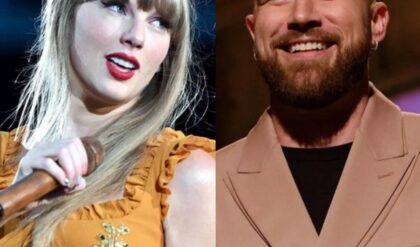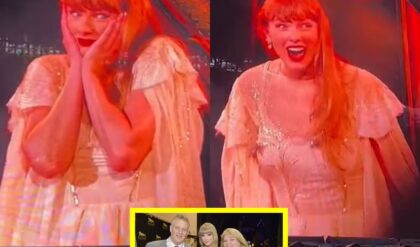**Diddy’s Public Apology: A Deep Dive into Behavioral Analysis**
In a recent development that has caught significant public attention, rapper and music producer Sean “Diddy” Combs released a public apology video following a leaked security footage showing him and his ex-girlfriend, Cassie Ventura, in a hotel hallway.
This footage seemed to support some of the numerous accusations against him, including harassment, trafficking, physical abuse, and sexual misconduct.

Behavioral analyst Spidey from The Behavioral Arts channel took a closer look at Diddy’s apology, providing insights into whether his remorse was genuine or a calculated deflection.
### The Context
Over the past few years, several women have accused Diddy of severe misconduct. This culminated towards the end of 2023 when multiple lawsuits were filed against him.
One notable case involved Cassie Ventura, who sued Diddy, leading to a quick out-of-court settlement. Initially, Diddy denied all allegations, suggesting that the lawsuits were financially motivated.
However, the situation took a dramatic turn with the release of the hotel footage, prompting Diddy to issue a public apology on Instagram.
### Spidey’s Behavioral Analysis
Spidey begins his analysis by examining Diddy’s facial expressions and body language, emphasizing the importance of “illustrators” – gestures that naturally accompany speech to enhance communication.
According to Spidey, in genuine communication, gestures typically synchronize with the spoken words or precede them slightly. This synchronization indicates that the speaker’s thoughts and emotions are aligned.
### The Eye Block
In the video, Diddy says, “It’s so difficult to reflect on the darkest times in your life.” During this statement, Diddy closes his eyes momentarily – an “eye block.”
Spidey explains that eye blocking can occur when someone wants to avoid confronting a negative thought or to emphasize the seriousness of a statement.
However, Diddy’s eye block seemed delayed, occurring as he said “times” rather than synchronizing with “darkest.” This delay suggested to Spidey that Diddy might be attempting to artificially emphasize the severity of his past actions, rather than naturally expressing his remorse.
### The Eyebrow Movement
Another critical observation was Diddy’s eyebrow movement – or the lack thereof. Typically, eyebrows are highly expressive and convey emotions such as surprise, confusion, or emphasis.
Diddy’s eyebrows, however, remain largely immobile. Spidey notes that while Diddy’s eyebrows can move (evidenced by slight movements during his statement), they rarely do.
This could be due to cosmetic procedures or a habitual lack of expressiveness. Regardless, this baseline makes it challenging to gauge Diddy’s true emotional state through his eyebrows alone.
### Pronoun Choice and Psychological Distancing
Spidey also analyzes Diddy’s choice of pronouns. Diddy says, “sometimes you have to reflect on the darkest times in your life.” Instead of personalizing his reflection, Diddy uses the second person (“you”), creating a psychological distance.
This pronoun choice can be a tactic to make his audience relate to his situation, potentially garnering empathy by implying that everyone has dark moments to reflect on.
However, Spidey argues that this comparison is misleading because most people’s “dark moments” are not comparable to the serious allegations Diddy faces.
### Lack of Specificity
Diddy’s apology is notably vague. He mentions “my behaviors in that video” and “my actions in that video” without providing any details about what those behaviors and actions were.
Spidey highlights this as a form of psychological distancing, where instead of softening the terms (like saying “took” instead of “stole”), Diddy omits the specifics entirely.
This vagueness could be a strategy to avoid further incriminating himself or acknowledging a pattern of behavior that might emerge with additional accusations.
### The Head Nod and Chin Gesture
Spidey also focuses on Diddy’s head movements. When Diddy says, “I take full responsibility for my actions in that video,” his head nods in agreement initially but then shifts into a slight shaking motion, which can be interpreted as a “no” gesture.
Spidey explains that this head movement, often misunderstood as a clear sign of deception, is actually a versatile gesture that can indicate various things, including emphasis or a struggle with accepting the statement being made.
### Conclusion
Spidey’s detailed analysis of Diddy’s apology video suggests a complex interplay of genuine remorse and calculated deflection. While Diddy’s words claim full responsibility, his body language and choice of words create ambiguity about the sincerity of his apology.
The lack of synchronization in his gestures, the minimal movement of his eyebrows, the use of general pronouns, and the avoidance of specific details all point to an attempt to mitigate the fallout rather than fully confront and acknowledge the alleged behaviors.
This behavioral analysis underscores the importance of scrutinizing public apologies, especially from high-profile individuals facing serious allegations.
It reminds us that actions often speak louder than words, and in Diddy’s case, the actions seen in the leaked footage and the vague, distanced language in his apology leave many questions about his true accountability and the extent of his remorse.
News
Drama in the Ring! Tyson Fury Terminates John Fury’s Role as Trainer After Brutal Upset by Oleksandr Usyk
In a dramatic turn of events, Tyson Fury has decided to terminate his father John Fury’s role as his trainer following a brutal upset by Oleksandr Usyk. The unexpected loss has sent shockwaves through the boxing community and led to…
(VIDEO) Megan Thee Stallion BAITS Nicki Minaj into another rap beef? | 50 Cent DRAGS Diddy’s son Christian
**Christian Combs Disses 50 Cent and 50 Responds: A Clash of Hip-Hop Titans** In the realm of hip-hop, beefs and controversies are almost as common as chart-topping hits. Recently, a new chapter unfolded in the ongoing saga between Christian Combs,…
Breaking: Gordon Ramsay Throws Robert De Niro Out Of His Restaurant, “Don’t Come Back Here You Woke Baby”
In a dramatic and unexpected turn of events, renowned celebrity chef Gordon Ramsay has made headlines by reportedly throwing Academy Award-winning actor Robert De Niro out of his restaurant. The incident, which has sparked widespread media attention and public debate,…
(VIDEO) Joe Rogan & Matthew McConaughey Exposes 7 Actors Hollywood BETRAYED
**Unveiling the Dark Side of Hollywood: The Stories of Matthew McConaughey, Keanu Reeves, and Wesley Snipes** Hollywood, often seen as a dreamland of glitz and glamour, has a hidden underbelly that reveals a starkly different reality for some of its…
Breaking: Denzel Washington Rejects $100 Million Disney Offer to Work with ‘Woke’ Robert De Niro, ‘He’s a Creepy Old Man’
In a recent turn of events that has left Hollywood in a state of shock and contemplation, Denzel Washington, a figure synonymous with integrity and talent in the film industry, has made headlines by rejecting a colossal $100 million offer…
Breaking: Robert De Niro Gets Kicked Out Of The Warner Bros. Studio, “Keep Your Wokeness Out”
In a shocking turn of events that has sent ripples through Hollywood, iconic actor Robert De Niro was reportedly thrown out of Warner Bros. Studios. The reason cited? Spreading his “creepiness.” This incident has sparked intense debate and controversy, leaving…
End of content
No more pages to load











